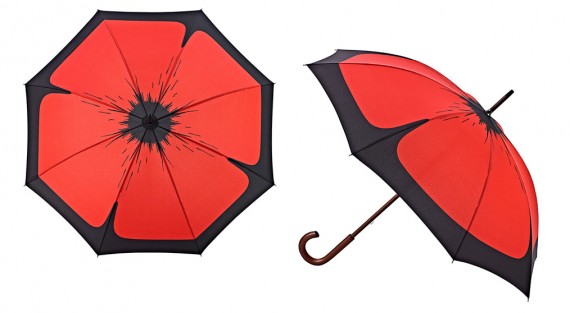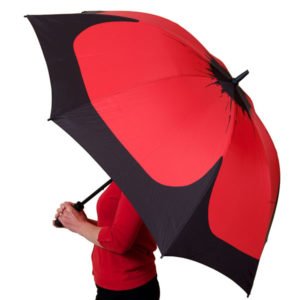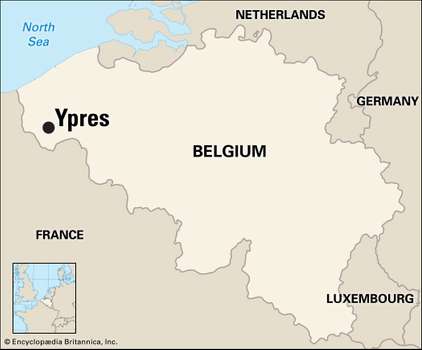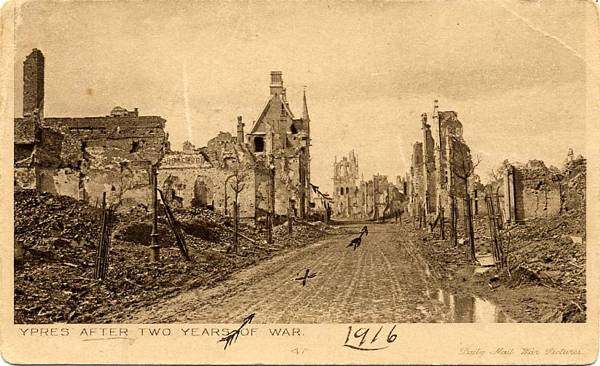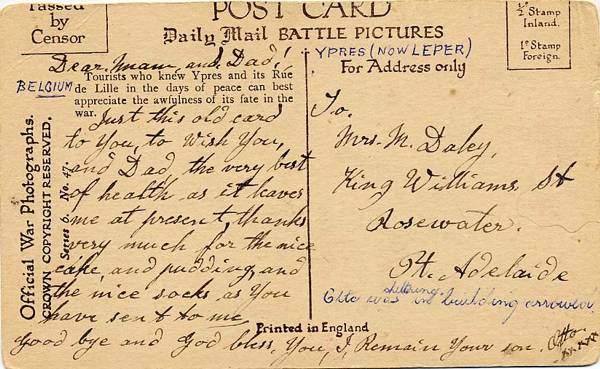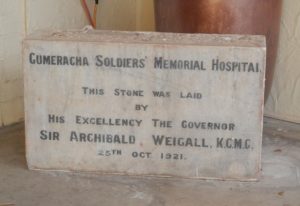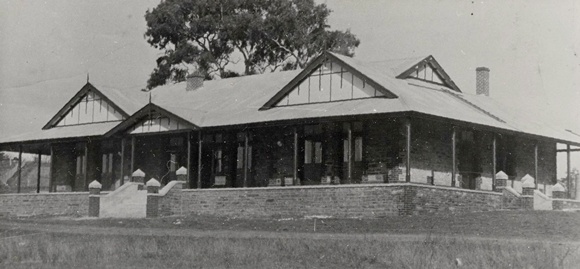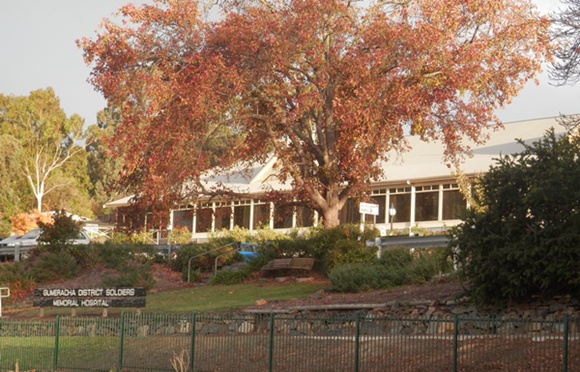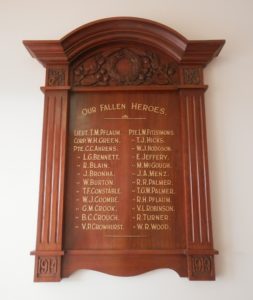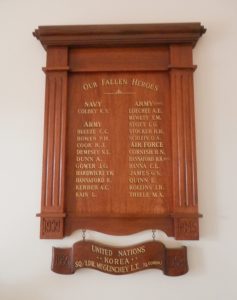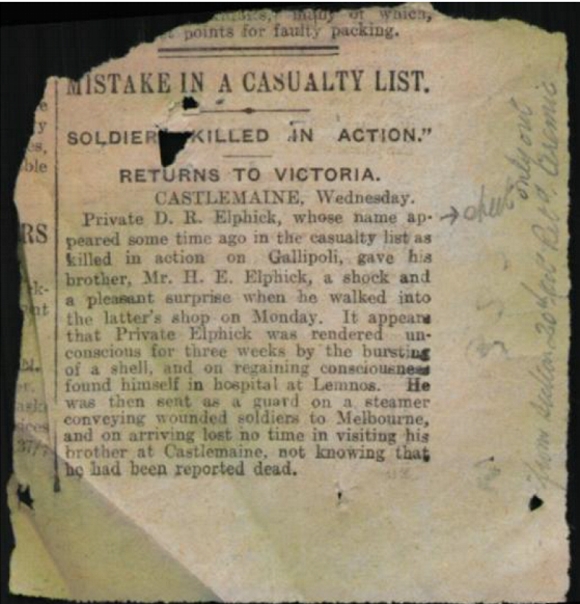The Poppy Umbrella
If you’re in need of a new umbrella, or even if you aren’t, but like to put your money to a good cause … buy a Poppy umbrella.
I first saw these poppy umbrellas at the Families and Friends of the First AIF stand at Congress in Sydney in 2018, and bought one there, and since then I’ve bought a few more and given them as gifts.
The poppy of course is a symbol of remembrance of the First World War, that is strongly linked with Armistice Day (11 November), but the poppy’s origin as a popular symbol of remembrance lies in the battlefields of the First World War, where poppies were a common sight, especially on the Western Front.
These umbrellas not only look fabulous with a giant red poppy graphic, but as mentioned before, the funds go to a good cause …
Here’s a few paragraphs from the FFFAIF website which gives information about the umbrella, and what the funds go to …
The Poppy Umbrella, resembling a Flanders poppy when open, is manufactured for Rembrella by Fultons, the largest supplier of quality umbrellas in the UK. They are only available for sale through registered charities of ex-Service and welfare organisations, or military and heritage museums, or educational associations and not-for-profit organisations, and in 2009 Rembrella appointed Families and Friends of the First AIF (FFAIF) as its Australian importer.
Sales of the umbrellas enables FFFAIF to contribute funding to Commemorations in Sydney for Fromelles Day and the Battles of 3rd Ypres as well towards the costs of headstones on unmarked graves of returned Diggers.
The Poppy umbrellas are available in three different styles: Telescopic (small and compact), Standard (tall with a wooden curved handle) and Golf Umbrella (large).
The FFFAIF don’t have online ordering on their website, but if you contact them and they can send you an order form, or you can simply call and place an order over the phone. Below are the specifications of each style. Prices are in Australian dollars.
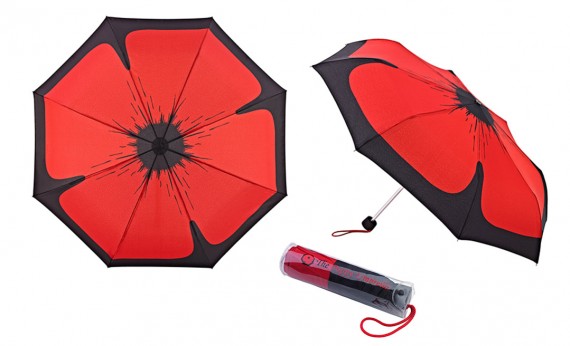 Telescopic Poppy Umbrella
Telescopic Poppy Umbrella
A handy folding umbrella, light and easy tp cally for everyday use.
– 53cm fib length
– 3 stage manual telescopic
– 24cm long when closed
– has a carry strap and clear PVC protective sleeve
$45.00 + p&h ($9 postage for 1-2, $15 postage for 3-4)
Standard Poppy Umbrella
This traditional style wooden ‘crooked’ handle umbrella will add a vivid splash of colour on a wet (or sunny) day.
– 59cm rib length, 90cm shaft length
– wooden shaft and wooden crooked handle
– cover diameter 102cm
– includes a black protective sleeve
$50.00 + p/h (contact FFFAIF for postage cost)
Golf Style Poppy Umbrella
A large, lightweight umprella, ideal for outdoor activities like golfing or walking.
– 77cm rib length, 98cm shaft length
– cover diameter 134cm
– lightweight fibreglass frame
– black ‘pistol grip’ handle
$55.00 + p/h (contact FFFAIF for postage cost)
—————————-
Disclosure: Just to be clear, I have no affiliation with FFFAIF other than being a paying customer who loves their umbrellas. I simply wanted to write about them so others know where they can get their own good quality, great looking, and supports a good cause umbrella.
If you’d like to keep up with the latest news from the Friends and Families of the First AIF, follow their Facebook page. Or if you’re like to get in touch, their contact details are:
Email: enquiries@fffaif.org.au
Phone: (02) 6882 6270
Address: PO Box 4245, Forster, NSW 2428 Australia
Anzac Day: A Message from the Battlefield
For Anzac Day this year I’m focussing on Ypres, a city in Belgium that’s on the French border. A prosperous place that in 1914 had a population of around 18,000 people.
Just for reference, Ypres is the Belgian version of the name, while the Australian Diggers knew it as as “Wipers”. And nowadays it is often known by it’s Dutch version, “Ieper”, which is pronounced as “ee-per”.
From November 1914 through until November 1917 Ypres was devastated by war and as you would expect, deserted by its inhabitants. Over that 4 year period, there were over 38,000 Australians who were killed or wounded in the Ypres battles, while the total number of casualties for all sides climbed into the many hundreds of thousands.
Captain Frank Hurley was an Australian official military photographer who was in Ypres during 1918 and captured many unforgettable images of the destruction and the lives of the Australian soldiers during the Third Battle of Ypres (also known as the Battle of Passchendaele). The photograph at the top of this post is one of his very well-known ones. The State Library of New South Wales has a large collection of his war photographs (and diaries) online, so if you’re interested feel free to click here to view them.
Anyway this year I’m remembering my great grandpa, Otto Rafael Winter. I have written about him before, including his service with the Australian military, but this time I’m highlighting a family heirloom.
The postcard pictured below is one of the very few heirlooms that exist from my Winter family, and it’s a postcard that Otto sent from Ypres, Belgium (one of the places he was deployed to) to his parents-in-law, John and Margaret Daley, in South Australia.
The postcard itself is a photograph of what the city of Ypres looked like after two years of war: bombed out buildings and crumbling ruins. But on it he’s drawn little arrows, with a notation on the back written by his daughter saying “Otto was sheltering in building arrowed”. He’s also written a date of 1916 on it, but I’m unsure of when the postcard was actually sent.
A transcript of the what he wrote is as follows:
Dear Mam, and Dad!
Just this old card to you, to wish you and Dad the very best of health as it leaves me at present, thanks very much for the nice cake, and pudding, and the nice socks as you have sent to me.
Good bye and God bless you,
I remain you son, Otto xxxxx
—————————–
To me it’s not ‘just’ a postcard. It’s a tiny picture into what his life was like during the war, and what he saw. It also a little memento that shows me how much he cared for his parents-in-law. Firstly taking the time to write to them. Thanking them for the parcels of cake, pudding and socks that they’d sent. Calling them mam and dad. And signing off as “I remain your son”. That shows he cared, right?
Otto was a merchant seaman from Finland who jumped ship in Australia, and made it his home, so much so, that in 1909 he chose to become an Australian citizen and was naturalised.
He met a local girl, Irene Daley. Married her in June 1915 and their first child was born a few months later.
With the war dragging on much longer than it was expected, the call for more volunteers came and Otto signed up in January 1916, and by May 1916 he was in Belgium. A tunneller, he was in Ypres in March 1918 when he was poisoned in a mustard gas attack and was sent to an Australian military hospital in France to recover.
Otto was lucky. Not only did he survive the mustard gas, but also the rest of the war despite other injuries. In June 1919 he made it home to his wife and family, and lived on until he was 81.
Lest We Forget!
Remembrance Day – Gumeracha’s Fallen Heroes
“On the 11th hour, of the 11th day, of the 11th month
we will remember them”
After more than four years of continuous war, at 11am on 11 November 1918 the guns of the Western Front fell silent. From that moment the “11th hour of the 11th day of the 11th month” has attained a special significance, and has became forever associated with the remembrance of those who had died in World War 1 and subsequent wars as well.
Remembrance Day (sometimes also referred to as Poppy Day) is a day that has been observed throughout the Commonwealth (Australia included) since the end of the First World War, to remember the members of the armed forces who have died in the line of duty.
There wouldn’t be any town in Australia that wasn’t affected by the Great War on one way or another. So many young men, more of often than not eagerly signed up to do their duty. And sadly not all came home.
Gumeracha is a tiny town in the Adelaide Hills region of South Australia. A typical country town, with a population of few hundred (back then), and one where everyone knows everyone. And it was a town that saw its share of tragedy and despair with a number of men who went to fight for their country, and never returned.
Throughout Australia, in the cities and the country towns, the brave men and women were honoured on thousands of memorials and honour boards that were created, so as to “never forget those brave souls”.
Gumeracha certainly did just that. They have honour boards for both WW1 and WW2, and even a small one for the Korean War. But their ultimate memorial is the Gumeracha District Soldiers’ Memorial Hospital.
In the “Gumeracha District Soldiers Memorial Hospital Diamond Jubilee 1922-1982” book it quotes the following …
“Following the cessation of fighting in World War I the local community held a public meeting in the Gumeracha Town Hall to discuss the formation of a war memorial to commemorate the men who had given their lives in conflict … The meeting unanimously agreed that a memorial pavillion would be built and a Committee was formed to plan fund raising efforts for the building. Dr Rex Matters was through Gumeracha about this time as he spoke with both Mr W.J. Hannaford and Mr J.H. Hynes concerning the advantages to be gained if a larger hospital was built in Gumeracha. The two gentlemen agreed that this would have far greater benefits for the community than the planned pavillion. The site selected would bring the building into prominence and give the ailing persons recuperating at the hospital one of the most glorious views of the surrounding area. The hospital was to be built on top of the hill overlooking the town. Mr J.B. Randell, a local grazier and orchardist, was approached and asked if he would sell the piece of land on the top of the hill so that a hospital may be built thereon. To this he agreed, and £100 was paid for the site.”
The hospital was officially opened on 22 July 1922, and is still running to this day. When you enter the hospital one of the first things you see is the WWI Honour Roll, and alongside that is one for the fallen heroes from World War II and the Korean War.
Our Fallen Heroes – WW1
Lieut. T.M. Pflaum
Corp. W.H. Green
Pte. C.C. Ahrens
Pte. L.G. Bennett
Pte. R. Blain
Pte. J. Bronha
Pte. W. Burton
Pte. T.F. Constable
Pte. W.J. Coombe
Pte. G.M. Crook
Pte. B.C. Crouch
Pte. V.P. Crowhurst
Pte. L.W. Fitzsimons
Pte. T.J. Hicks
Pte. W.J. Hodgson
Pte. E. Jeffery
Pte. M. McGough
Pte. J.A. Menz
Pte. R.R. Palmer
Pte. T.G.W. Palmer
Pte. R.H. Pflaum
Pte. V.L. Robinson
Pte. R. Turner
Pte. W.R. Wood
Our Fallen Heroes – WW2
Navy
Colbey, R.S.
Army
Bleeze, C.C.
Bowen, P.H.
Cook, R.J.
Dempsey, N.L.
Dunn, A.
Gower, J.G.
Hardwicke, F.W.
Hannaford, R.
Kerber, A.C.
Kain, L.
Loechel, A.E.
Mewett, T.M.
Stott, L.G.
Stocker, H.R.
Schlein, D.A.
Air Force
Cornish, H.N.
Hannaford, H.R.
Hanna, C.L.
James, G.S.
Quinn, E.
Rollins, J.R.
Thiele, M.A.
Our Fallen Heroes – Korea
Sq/Ldr McGlinchey, L.T.
So while we take a moment in our busy lives to remember those who served, and the sacrifice they made for us and our country, we also think of those in the small town communities who made sacrifices to be able to honour their friends and family who never returned.
Gumeracha is a community town. The hospital was paid by the generosity of those in the community combined with the extraordinary efforts of the fund raising committee. So the Gum hospital was largely built by those in community, for the community – and stands as an incredible memorial to those who never returned.
“Lest We Forget”
“Dead” Soldier Returns
Anzac Day. The day to remember those who fought for our country. Some survived. Many didn’t. And in reality those that returned were changed forever.
It was while I was going through the military records of Arthur Vincent Elphick (Mr Lonetester’s great grandpa), that I kept seeing the name of Donovan Russell Elphick written in his records. Arthur was one of twelve children in the family, and Donovan was his youngest brother.
On checking Donovan’s military records on the National Archives of Australia website, and reading through the dossier, one page in the record jumped out at me. But firstly, some background information …
Born in Prospect, South Australia, but living in Western Australia, 24 year old Donovan signed up to serve his country in January 1915. After training in Western Australia, he was assigned to the 5th Reinforcements 11th AIF, and sailed to Egypt in June 1915, and was obviously in the thick of it from arrival, as within a week of arriving he was in hospital suffering from “deafness”.
From here, I’ll let you read the article as that explains it all …
The above article came from a Victorian newspaper, and is dated 20 October 1915. This story was repeated in numerous Victorian, South Australian and Western Australian newspapers over the weeks following. As you can imagine it was quite a story. And to say that it shocked his brother (Harold), when he walked in would be an understatement.
Donovan was one of six boys in the family, with three going off to war. Sadly only two returned.
And while Donovan Elphick did survive World War 1, he died in Perth on 25 December 1936, aged just 45.

